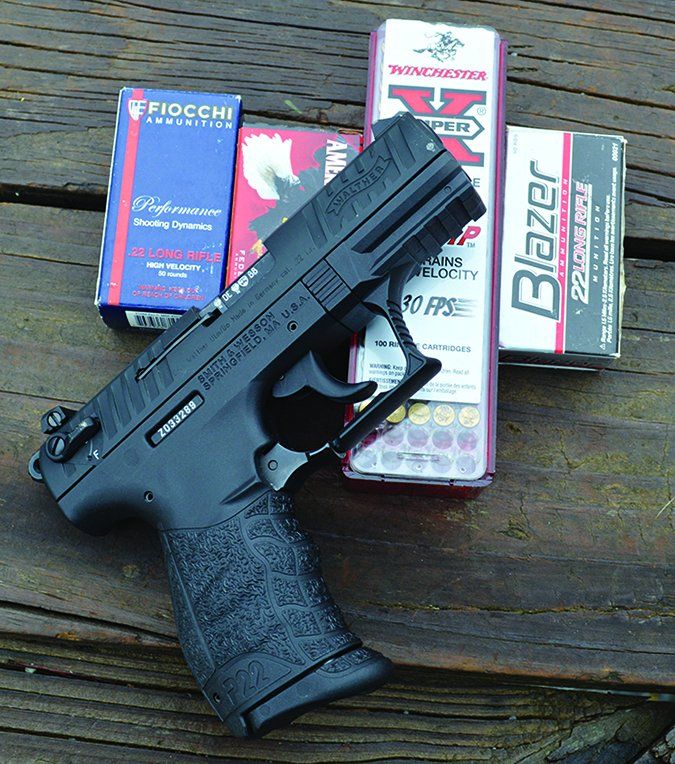
A few months ago we received an insightful comment from a reader. He asked us to do an ammunition comparison on inexpensive loads from diverse makers. How do they perform, he asked, compared to the big three (Federal, Remington, and Winchester) and the well-known Black Hills, Hornady, and Speer, and a few more. We are lucky to have so many choices, and because most, if not all, manufacturers subscribe to SAAMI standards, the ammunition should be safe and reliable.
There are two aspects to reliability: feeding and chambering properly and then going bang. We have run across poor ammunition that fail on either or both counts, but most of it is surplus ammunition from third-world nations. We won’t discuss it here. If a brand makes it to the national market, the product has some merit.
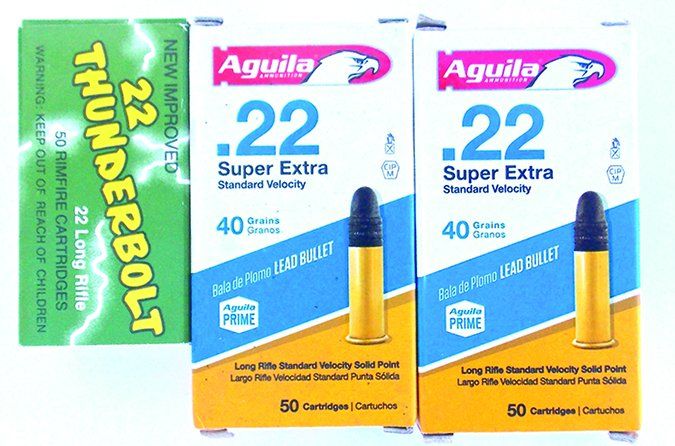
There are economy loads that offer jacketed hollowpoint (JHP) bullets, and most of these do not have the development behind them that the Big Three loads do. However, we did test some JHP loadings in this report because they were as inexpensive as any other loads, and, in some cases, were all that was available. The goal of this report was to fire as many types of ammunition as possible in both popular and less popular calibers and determine if we were getting our money’s worth in practice ammunition.
Safety came first, then reliable function. We also paid attention to powder burn. We have had experience with foreign-produced ammunition that simply did not have the powder technology of our domestic loads and the result was a lot of powder ash. If a load was particularly dirty — lots of smoke and debris — we took that into account.
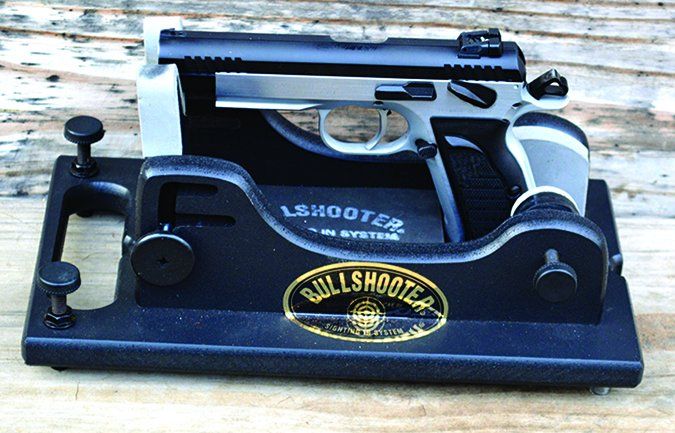
Thankfully, the recent ammunition shortage that now seems to have abated had us searching out and trying anything we could find. Brand loyalty took a hit. So it is good to know if these inexpensive loads will function and if they are accurate enough for practice. Some of us like to fire for accuracy at longer ranges, but nothing tested wasn’t accurate enough for practice at 15 to 25 yards. Some of the loads tested are among the very few available in certain calibers. There isn’t a broad choice in 32 Smith & Wesson Long and 38 Smith & Wesson, as two examples.
It is worth noting that one of the raters has different criteria for loads, and they are reliability, dirtiness, and speed. His old Colt will not feed hollowpoints, so he concentrates on finding reliable rounds, getting a clean burn, and generating velocity, goals that are worthwhile to pursue.
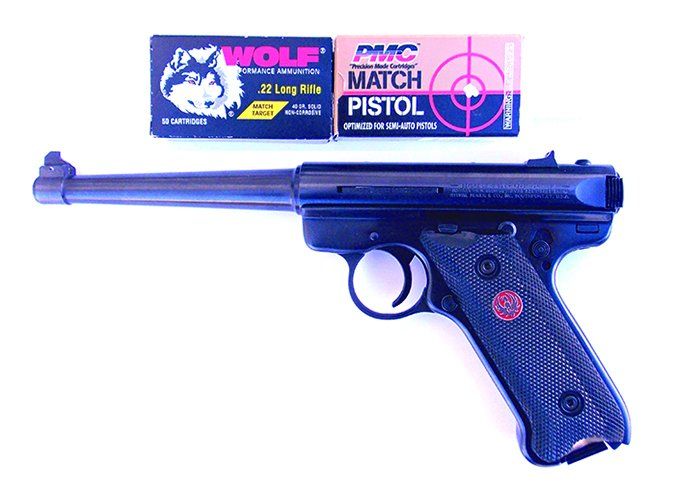
As we told the reader who asked for this test, in our gun evaluations we strive to be fair and present a level playing field. That is why we use proven ammunition when testing a new gun. We generally include a generic ball load and one or two defense loads from the major makers when testing a new gun. This is only fair. Testing an unknown load with a new gun may not prove anything — does the ammunition or the gun bear the responsibility for failures? As one of our raters noted in his work at our sister publication, the well-respected American Gunsmith, and as a private gun fixer, he keeps a supply of generic ball from Federal, Fiocchi, Black Hills, Speer, and Winchester on hand. The gun is sick if it doesn’t feed these loads. By the same token, when testing the ammunition in this report, we did not pick up new guns, but instead relied on proven firearms from our team’s collections that have proven reliable and reasonably accurate.
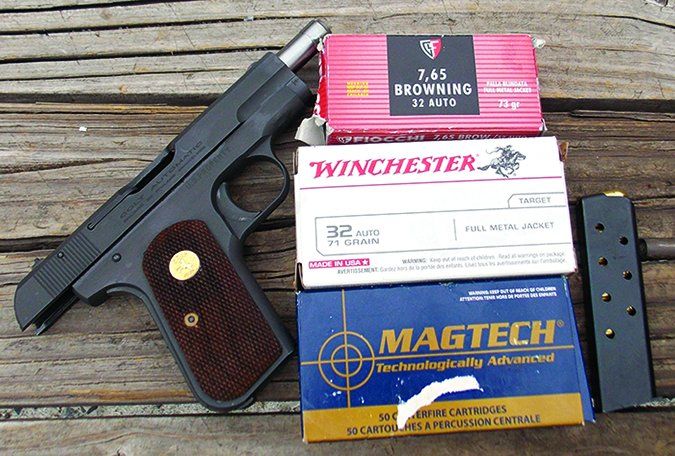
We were able to collect loads in thirteen calibers for use in this feature. During the test, our shooters used a Bullshooters pistol rest ($55 from Brownells.com) to confirm accuracy. Some of the results were excellent, others poor, and most fair. Accuracy is relative, and the 38-caliber Iver Johnson break-top would not be in same accuracy range as a tuned 45 ACP or 9mm pistol, but we expected some type of pattern.
One note about these burner loads: Brand performance isn’t always consistent among the makers of inexpensive ammunition. One maker may have a poor load in one caliber and a standout in another. Let the buyer beware, but we found good loads for practice in most cases. We fired at least 50 rounds of each load tested, including 35 rounds off hand and three five-shot accuracy groups. Accuracy testing was conducted at a distance appropriate for the handgun.
In each case, we describe the performance of the test rounds, but we highlight one round in particular that we recommend.
22 Long Rifle Ammo
GUN TESTS BEST BUY: Remington Thunderbolt
We used a rater’s favorite 22-caliber handgun, a Walther P22, during the test. We were able to pit domestic burner loads against foreign loads. We should note that with Fiocchi’s modern plant in Ozark, Missouri, that brand can’t be said to be foreign produced. We tested the Winchester Wildcat 40-grain ($2.93/50 rounds at CheaperThanDirt.com), Winchester 37-grain HP Super ($7.65/100 at CheaperThanDirt.com), Fiocchi 40-grain 22FHVCRN ($4.29/50 at CheaperThanDirt.com), CCI Blazer 40-grain ($2.99/50 at AcademySports.com), Federal 38-grain copper-plated hollowpoints ($2.99/40 at Cabelas.com), Remington 40-grain Thunderbolt ($21.76/500 at Walmart.com), and the Aguila 40-grain HV ($2.29/50 at SCgunco.com). The Aguila is a standard-velocity load intended to give maximum performance, 884 fps from the test gun, and it worked fine. It may not work as well in all self-loaders. Since 22 LR is traditionally dirty, we were more lenient concerning powder ash but still noted it, and we also cleaned the Walther every 200 rounds. The good news — there wasn’t a single failure to feed, chamber, fire, or eject, which isn’t common when testing this much 22 LR ammunition.
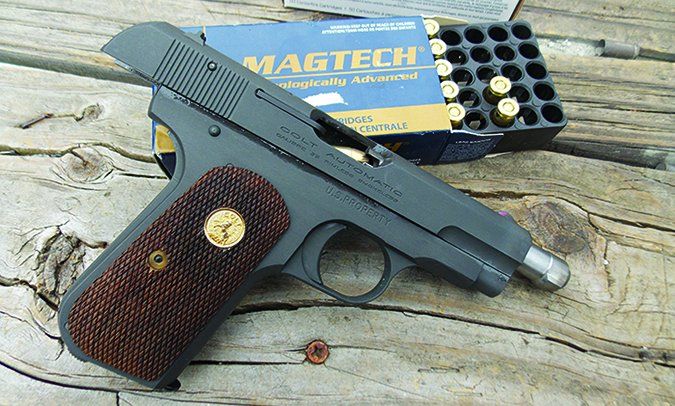
The Wildcat and the Thunderbolt performed similarly, so each is good to stock up on when the price is competitive. The CCI Blazer ran as high as $4.03/50 at some outlets, but its performance was also in with the other promotional brands. We really liked the Winchester Super-X hollowpoint. Velocity was good for all-round use, and it was as accurate as the very accurate Fiocchi loading. The Fiocchi loading was just excellent, with a clean powder burn and good accuracy, but expensive for bulk use. The Federal 38-grain plated hollowpoint is boxed in a 40-round box. For a high-speed hollowpoint, it is affordable and gave good results. The Aguila load was pleasant to fire and accurate as well.
In the end, it came down to the Winchester Wildcat, Remington Thunderbolt, and CCI Blazer. Buy the one that is least expensive; there is little difference between them. One may be more accurate in certain handguns. In this case, the Remington Thunderbolt was found at the best price, so it gets the nod.
22 Long Rifle Pistol Match Loads
GUN TESTS BEST BUY: Wolf Pistol Match
We tested the Wolf target load, Wolf Pistol Match ($54/500 at AmmunitionStore.com) and the PMC Pistol Match ($6.50/50 at a local shop). We used a Ruger Standard Model MK III with 6-inch barrel. The Wolf was more docile at 775 fps versus 809 fps for the PMC. The Wolf was the more accurate round, and the PMC seems to be out of production or is very difficult to find.
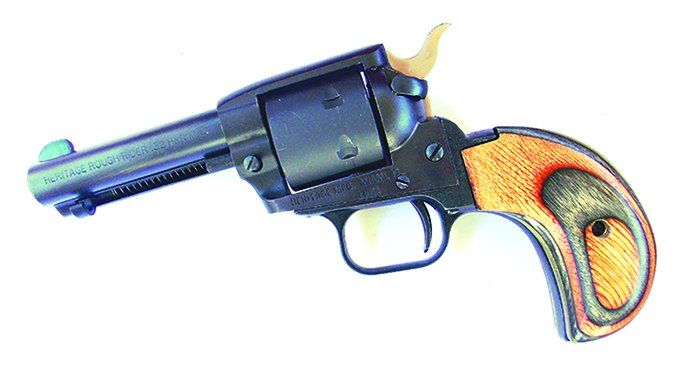
32 ACP Loads
GUN TESTS BEST BUY: Fiocchi 73-grain FMJ
We had one test handgun, a Colt 1903 32 ACP. We tested the Fiocchi 73-grain FMJ ($20.99/50 at MidwayUSA.com), Aguila 71-grain FMJ ($21.75/50 SportsmansGuide.com), Winchester 71-grain FMJ ($28.99/50 at SportsmansGuide.com), and the MagTech 32 ACP 71-grain JHP ($24.99/50 at SportsmansGuide.com). Results were good across the board with the FMJ loads. The Aguila load was slowest at 846 fps. The powder was dirty and the load smoky. The Winchester load featured a flat point and this may make more damage; however, at 860 fps it was slower than the 71-grain 1000-fps standard for 32 ACP. Speediest was the MagTech JHP at 915 fps. We had a misfeed with the MagTech not related to the hollow point; it dipped into the top of the chamber. The pistol in which this malfunction occurred will not feed the Hornady 60-grain XTP either. This occurred three times in 50 rounds. The Fiocchi load, at 905 fps, is fast and is also the best buy.
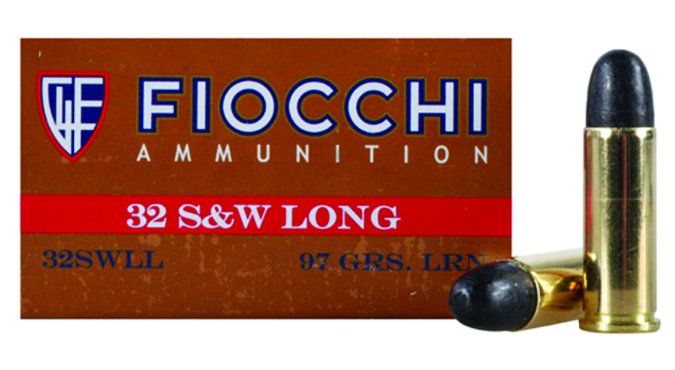
32 Smith & Wesson Long
GUN TESTS BEST BUY: Fiocchi 98-grain RNL
We tested three loads. Two were from Fiocchi, a 97-grain FMJ loading ($20.99/50) and a 97-grain LRN ($17.99/50), and the MagTech 98-grain JHP ($24.99/50, all from MidwayUSA.com). The handgun was a Heritage single-action revolver with a 3-inch barrel, chambered in the 32 H&R Magnum. Velocity was 690 fps for the Fiocchi FMJ loading, 730 fps for the Fiocchi LRN loading, and 680 fps for the MagTech JHP. We can only guess the Fiocchi FMJ load may meet some European requirement for jacketed ammunition. Velocity is too slow for expansion of a JHP, so this leaves us with the least expensive load, the Fiocchi 97-grain LRN, as our pick because it had the best accuracy.
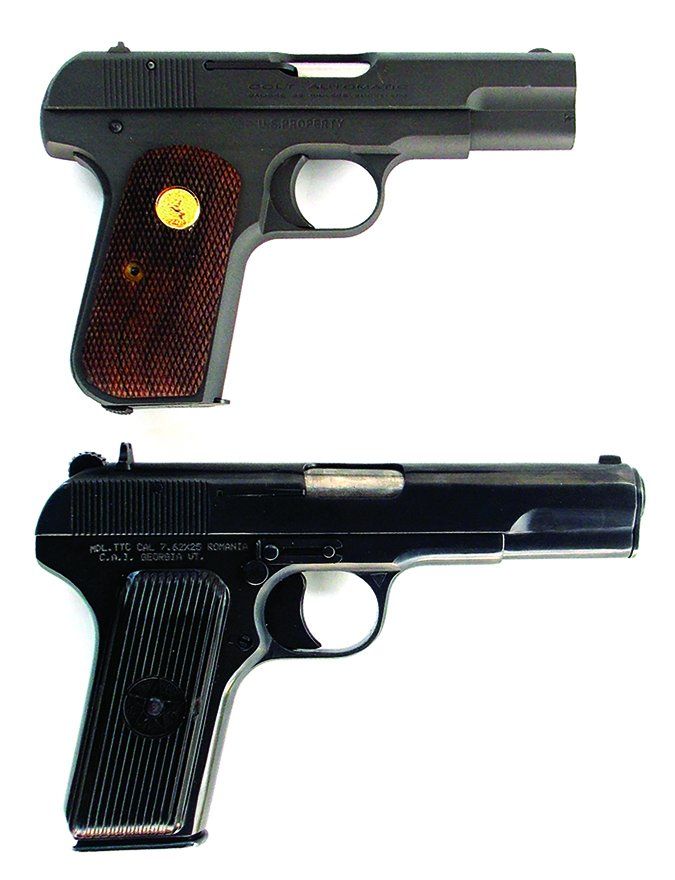
7.62mm Tokarev
GUN TESTS BEST BUY: Wolf 85-grain JHP
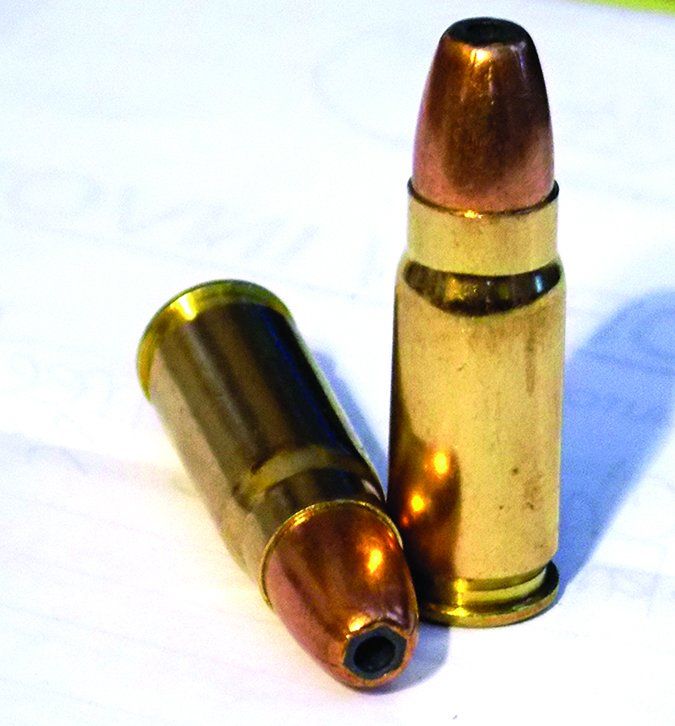
We used a Romanian TT33 one of the raters uses as a carry gun. It’s very reliable and accurate enough for defense use. We thought we tested four loads, but it turned out to be only three, with one packaged in different wraps from two companies. First up was the Century International Arms Red Army load with an 86-grain FMJ ($56.04/150 at SportsmansGuide.com), the Wolf 85-grain JHP, obtained locally for $18/50, the PPU 85-grain JHP ($18.04/50 at SportsmansGuide.com), and Sellier & Bellot 86-grain FMJ ($19.18/50 at SportsmansGuide.com). The Red Army loads functioned and burned clean enough, with good accuracy. The Wolf and the PPU JHP loads were identical, and are the same load in different packaging. Velocity was 1246 fps on average. One of our raters says his tests show good expansion. The Sellier & Bellot load at 1400 fps was fastest. Considering the clean powder burn and good accuracy, the most expensive load — and it is barely more expensive than the others — is a good buy. However, the Wolf load is a JHP that feeds perfectly and is accurate and also has a personal-defense component.
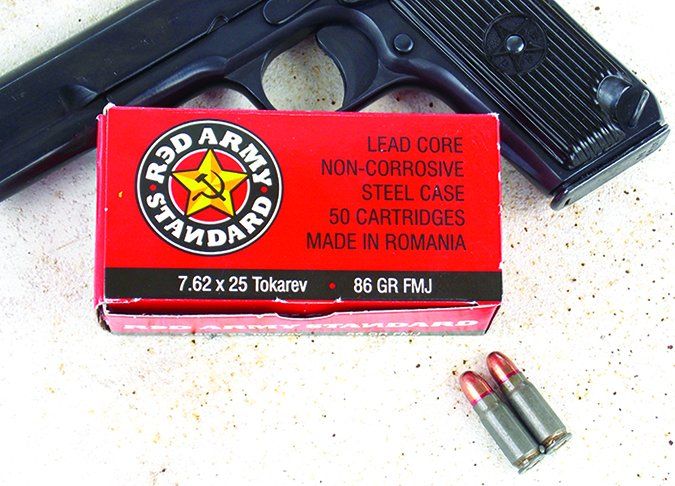
38 Smith & Wesson
GUN TESTS BEST BUY: MagTech 146-grain RNL
We used two revolvers for this test, an Iver Johnson break-top revolver that passed a safety check (how many revolvers will do so after 100 years?) and a 5-inch-barrel Enfield MK2, which was Britain’s service revolver for many years. The Enfield, a rater notes, is among the best combat revolvers ever designed, albeit an underpowered example. He keeps the Enfield loaded with the Buffalo Bore 125-grain semi-wadcutter (SWC)/1000-fps load, which would wreck or blow the Iver Johnson, and keeps it stashed in his house. We were able to collect three loads: The PPU 146-grain RNL bullet ($15.99/50 at SportsmansGuide.com), the Fiocchi 146-grain RNL ($28/50 at LuckyGunner.com), and the MagTech 146-grain RNL ($23.99/50 at MidwayUSA.com). All fired normally. However, the PPU bullets were so loose in the cartridge case they could be moved by hand. The PPU velocity in the Iver Johnson was 557 fps. Fastest results were with the Fiocchi load at 715 fps from the Enfield. For practice, the least expensive load is okay, especially in the break-top guns, as you will not see much difference in accuracy. The Enfield, however, did perform best with the Fiocchi load. In the unlikely event you are going to use the 38 Smith & Wesson for personal defense and your handgun isn’t strong enough for the Buffalo Bore load — and that means a solid-frame swing-out cylinder revolver if you use the Buffalo Bore 125-grain SWC/1000 fps load — the Fiocchi is tops. We found the MagTech, with its middle-of-the-road performance, the best practice load.
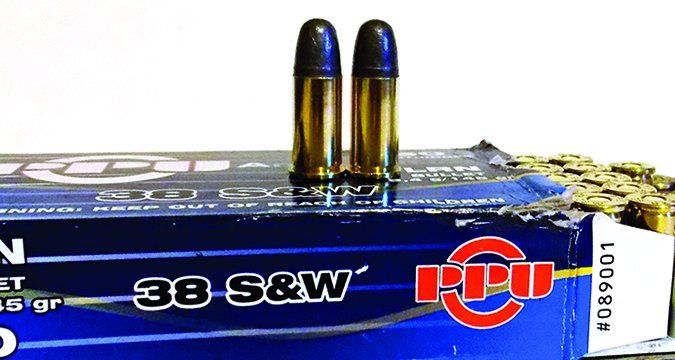
380 ACP
GUN TESTS BEST BUY: Silver Bear 94-grain FMJ
We used an RIA Baby Rock to test three practice loads in the popular 380 ACP chambering. There are a number of loads that are offered in 50-round boxes, but we sought out the least expensive and narrowed the field to these three. They are the Tula 91-grain FMJ ($13.07/50 at CheaperThanDirt.com), Silver Bear 94-grain FMJ ($13.59/50 at CheaperThanDirt.com), and Fiocchi 95-grain FMJ ($15.64/50 at CheaperThanDirt.com). The loads were within a narrower spectrum in velocity than the 32 ACP, at 940 to 980 fps. The Tula loads functioned but were dirty, with so much powder residue we cleaned the gun before proceeding to the next load to test. The Silver Bear is a zinc-cased load. It burned quite clean and gave good results. The Fiocchi load also gave good results, with a clean powder burn and good accuracy. The best buy for all-round economy is the Silver Bear load. We would buy the Fiocchi as well.
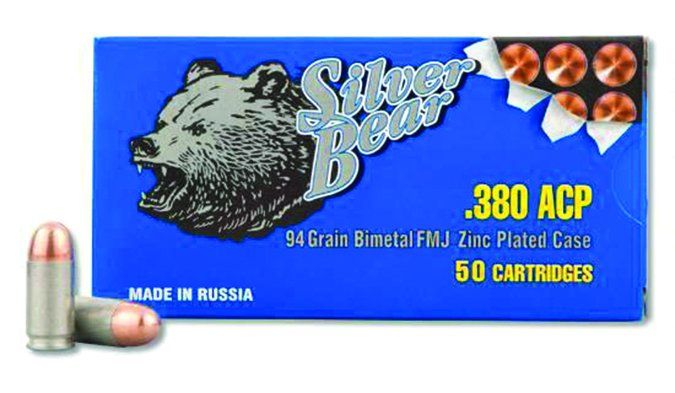
9mm Luger
GUN TESTS BEST BUY: Fiocchi 115-grain FMJ
To keep the test manageable, we limited the most popular handgun caliber in the world to seven loads, including one that surprised us. We are testing inexpensive ammunition and that did not mean the big three could not apply! We tested the Tula Steel cased 124-grain FMJ (TA919150 $9.49/50 at CheaperThanDirt.com), Fiocchi 115-grain FMJ ($11.89/50 at CheaperThanDirt.com), MagTech 115-grain FMJ ($10.59/50 at CheaperThanDirt.com), Aguila 115-grain FMJ ($12.35/50 at CheaperThanDirt.com), CCI Blazer 115-grain FMJ ($13.39/50 at CheaperThanDirt.com), and Winchester 115-grain FMJ ($24.79/100 at CheaperThanDirt.com). We also ordered a Federal American Eagle Practice and Defend pack (PAE9124HST, $33.95). This unit contains 100 rounds of American Eagle 95-grain FMJ and 20 rounds of 124-grain HST hollowpoints. The cost is 28 cents per round, so it is more expensive than the MagTech, as an example, at 21 cents a round, but the FMJ load is reliable and useful, and the box also contains 20 potent defense rounds. We used an Arex Rex Zero for most of the testing, backed up by the SIG P225A. The Tula steel-cased ammunition was the least accurate and also did not burn cleanly. Fiocchi gave good results and was the most accurate load.
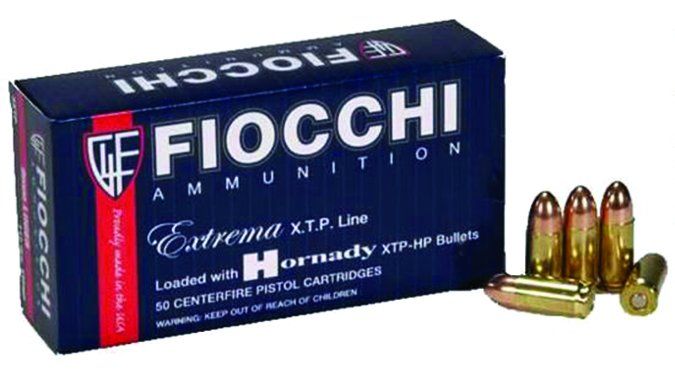
The MagTech load presented a peculiar problem — it fired okay, but another test involved unloading the cartridge from the chamber. The MagTech was very difficult to remove, requiring we fix the slide against a range table to exert enough force to unload the chamber — most of the time we simply fired the chambered cartridge. The cartridge case, we determined, was too long by a tiny amount. The Aguila ammunition presented the same problem, and a couple of cartridges from this 50-round box would not fully chamber in the Rex Zero. The CCI Blazer brass-cased ammunition was less expensive than the Winchester, but it was also less accurate. It was no more accurate than the cheaper loads and was less accurate than the Fiocchi. The Winchester load burned cleanly, perhaps the cleanest of any tested, and gave acceptable accuracy. We eliminated the too-long MagTech and Aguila loads. The Tula is inexpensive, but you will spend more time cleaning the gun, and it isn’t very accurate. We really like the Fiocchi load’s clean burn and good accuracy. The Blazer is okay, but it’s too expensive for the performance, in our view. The Winchester FMJ in the 100-round box is the better buy. The Federal Value Pack presents a good value, but only if you need the HST defense load.
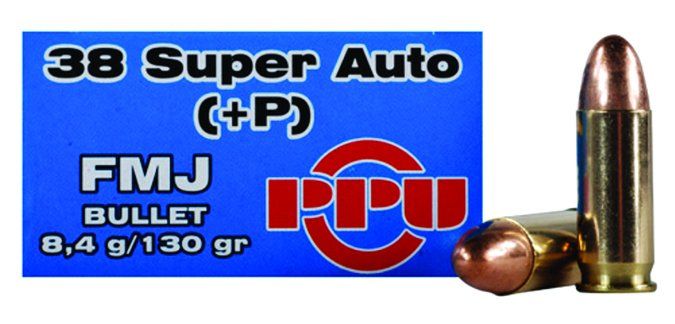
38 Super
GUN TESTS BEST BUY: Prvi 130-grain FMJ
This is a popular caliber we have tested before, and this time we used a Springfield Mil-Spec to produce data from three loads. The Prvi 130-grain FMJ load clocked 1189 fps ($20.75/50 BulkAmmo.com). The Fiocchi 129-grain load ($22.50/50 LuckyGunner.com) was the most accurate, and the SIG Sauer Elite 125-grain FMJ was also accurate ($23.50/50 AbleAmmo.com). The Prvi load is reliable and fast, just not as accurate as the others. But in the long haul, for most combat practice, it will not matter. We would buy any of these three loads.
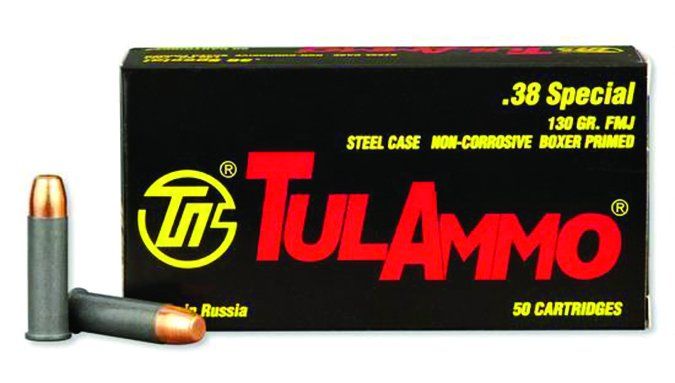
38 Special
GUN TESTS BEST BUY: Tula 38 Special
We used a Ruger GP100 357 Magnum revolver with a 2.5-inch barrel to test these loads. We were surprised when we began to look for 38 Special loads. There are very few under $20 dollars per 50-round box. We were able to test three loads, including the CCI Blazer 158-grain RNL ($16.59/50 at CheaperThanDirt.com), Fiocchi 125-grain CMJFB ($16.69/50 at CheaperThanDirt.com), and the Tula 130-grain FMJ ($10.19/50 at CheaperThanDirt.com), that fell into the affordable range. The Blazer gave acceptable accuracy. The Fiocchi load uses a special bullet that is coated and offers a lead free projectile. Accuracy was good. The Tula load mimics military 130-grain ball and gave acceptable results with a good powder burn.
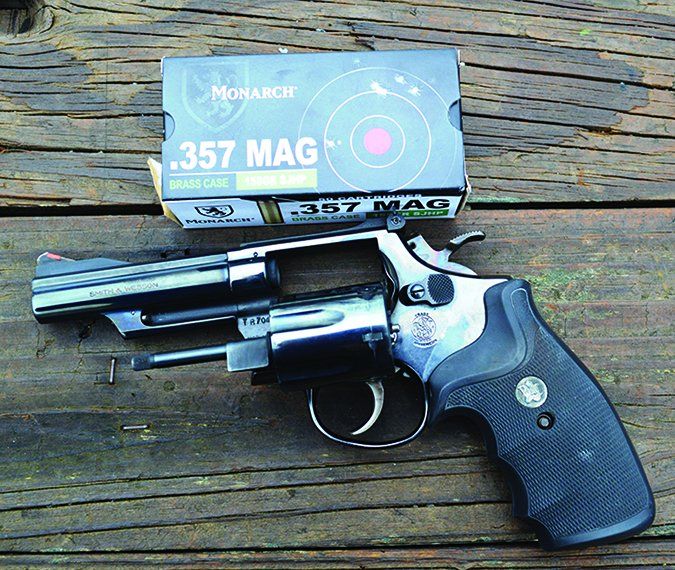
357 Magnum
GUN TESTS BEST BUY: Monarch 357 Magnum
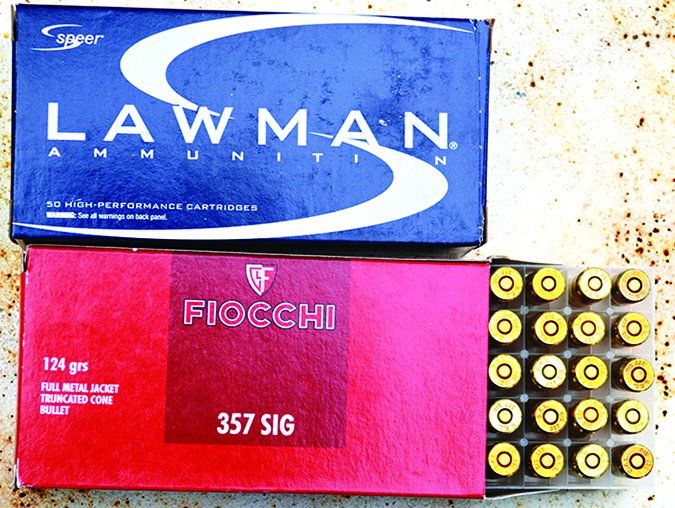
We used a 4-inch-barrel Smith & Wesson Combat Magnum Model 19 for testing. We found three loads that met our criteria. We found a Monarch brand at the local Academy Sports on clearance for $14.99. So, don’t confine shopping to online sources. We use online sources for reference and try to find the best deal, but don’t ignore local close-outs. We found Fiocchi 158-grain Extrema for sale at some online outlets for $24.99 for 25 rounds, but ordered a 50-round box at CheaperThanDirt.com for $20.59. It really pays to shop. This load uses the proven Hornady XTP bullet. More in keeping with the economy theme, we found the Fiocchi 142-grain Truncated Cone for $18.49/50 at CheaperThanDirt.com. All gave good accuracy, and while the Monarch was the least accurate, it is a full-power load — but not as powerful as the 1607 fps claimed on the box.
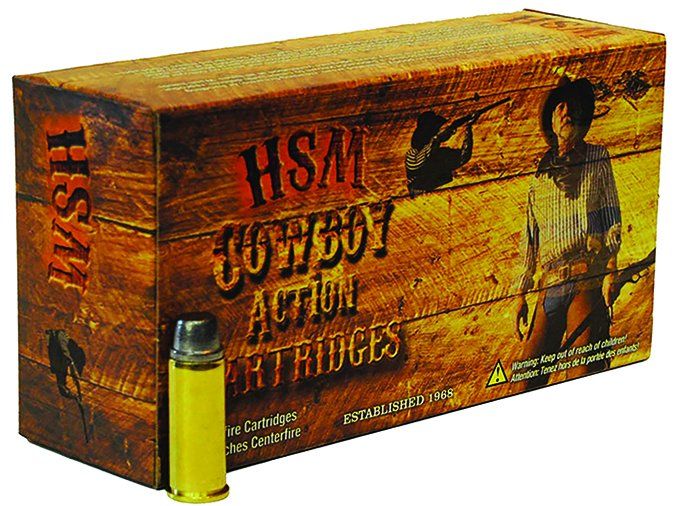
357 SIG
GUN TESTS BEST BUY: Speer 125-grain Lawman
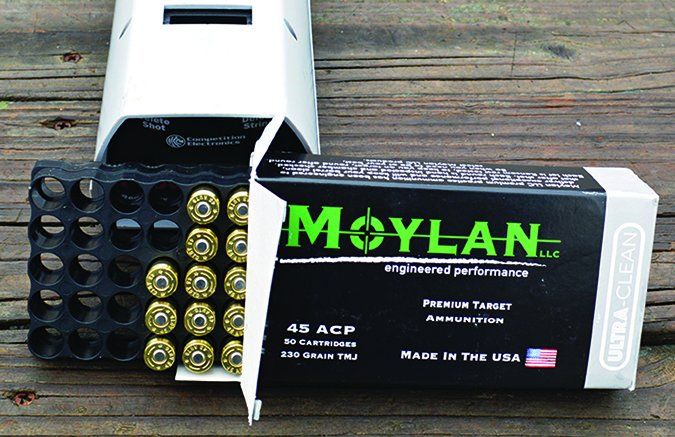
The 357 SIG can be a pricey commodity. As such, it isn’t easy to find a load that offers both good economy and good performance. We were able to search out two. We tested the Fiocchi 124-grain TCFMJ ($24.56/50 at CheaperThanDirt.com), and the Speer Lawman 125-grain FMJ ($37.99/50 at MidwayUSA.com). When doing our research at some sites, the Speer load was more expensive, but overall, with careful sorting, we found the Speer load was less expensive. Performance of each in the Springfield XD 357 SIG pistol was excellent. Velocity was 1220 fps with the Fiocchi and 1260 fps with the Speer load, sensibly downloaded from full-power service ammunition that may clock 1350 fps with the same weight bullet. Each gave excellent performance.
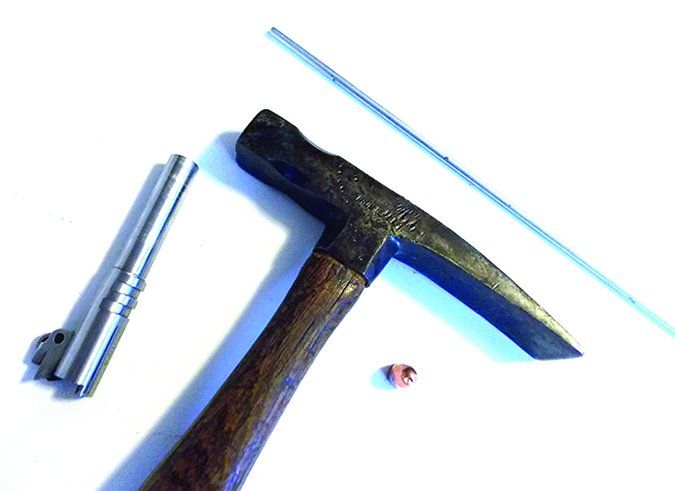
44 Special
GUN TESTS BEST BUY: HSM 240-grain Lead
We used the Ruger GP100 with 3-inch barrel to fire these rounds. This isn’t an inexpensive caliber to fire and use. We tested two loads, the HSM 240-grain lead ($29.60/50 VenturaMunitions.com) and the CCI Blazer 200-grain Gold Dot ($47.42/50 at CheaperThanDirt.com). While the Blazer load is also a good defense load, for informal practice the HSM load is plenty accurate and more affordable than RNL loads from the major makers.
45 ACP
GUN TESTS BEST BUY: Wolf 230-grain FMJ
It was pretty quick and easy to search for and order ammo online for this chambering, and we took care in ordering the least expensive loads. In 45 ACP, most 50-round boxes of 45 ACP are priced at $26 to $35. We had to spend less than this. Since we are not shooting a match or carrying these loads for personal defense, resistance to the elements and topnotch accuracy are not as important. Still, we wish to be able to hit a steel gong at 25 yards. We used two firearms, a Dan Wesson Guardian Commander and an EAA Witness Match. The Guardian was fired in combat-shooting drills and the EAA Witness Match was used in the only 25-yard test of this program. We used the Wolf 230-grain FMJ ($14.69/50 at CheaperThanDirt.com), the Fiocchi 230-grain CMJ ($18.49 at CheaperThanDirt.com), Fiocchi 230-grain FMJ ($18.69/50 at CheaperThanDirt.com), PPU Brass ($20.86/50 at CheaperThanDirt.com), and the Moylan 230-grain FMJ ($21.99/50 at MoylanLLC.com).
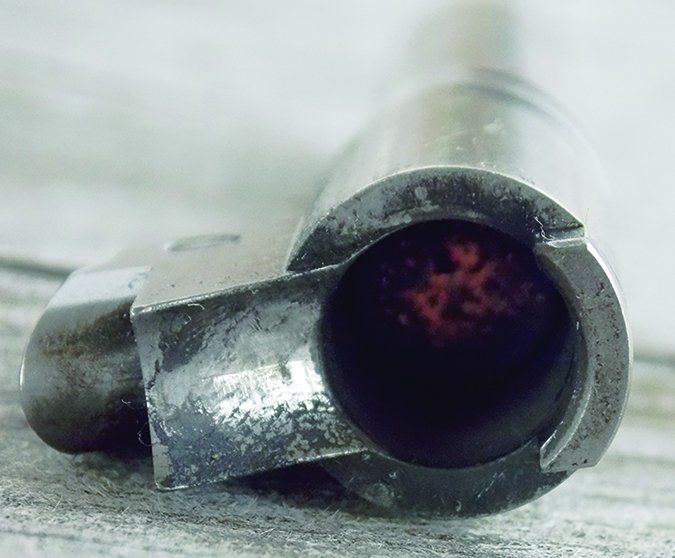
The first loads are billed as inexpensive practice loads. The most expensive load tested, the Moylan, is advertised as accurate enough for pistol matches. We began with the least expensive ammunition first. The Wolf ammunition fed, chambered, fired, and ejected just fine, with a clean burn and little muzzle flash and acceptable, if not stellar, accuracy. The Fiocchi CMJ plated-type bullet isn’t much less expensive than the FMJ Fiocchi. Accuracy with either was good. The PPU Brass 230-grain load also gave good results. The 230-grain standard 45 ACP load is renowned for a full powder burn, and in this case, the makers have gotten it right. Last up in the EAA Match 45 was the Moylan ammunition. Accuracy was its long suit. The cartridge performed well and delivered best-of-the-test accuracy. However, it was also the most expensive ammunition. The Moylan might be a choice for match shooting if you do not handload. The Fiocchi load is also accurate, and none of the loads tested were dogs.
It is worth noting that one rater had fired the Moylan to the tune of 200 cartridges before suggesting it be used in the test. During the test, firing the expensive Dan Wesson Guardian, a rater experienced a puff instead of a bang when he pulled the trigger. The case evidently did not have any powder in it. The bullet was stuck just ahead of the chamber, driven only by a primer. This malfunction was the only one we had in the 45s.
Written and photographed by Gun Tests Staff.





























